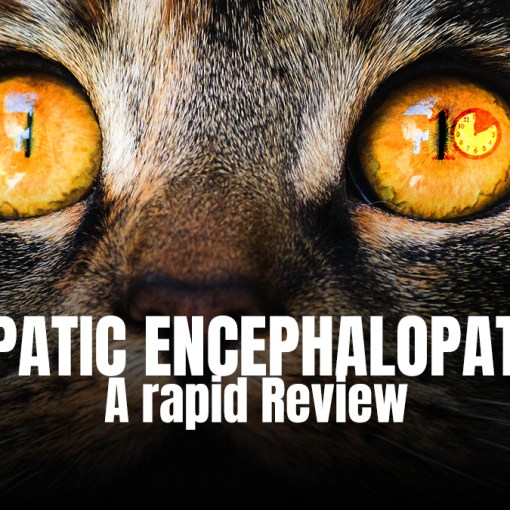Case
You are called into resuscitation, where EMS has just finished transferring a 55 year old man onto the ED stretcher. They were called after his family found him unconscious at home. His current GCS is 3…My approach
The differential diagnosis of altered mental status is huge and can be overwhelming in the face of an acutely ill, undifferentiated emergency department patient. I try to sort through diagnoses based on how quickly they could kill the patient and how quickly I can treat them.What could kill my patient immediately?
- Cardiac arrest
- Airway obstruction
- Breathing (oxygenation)
What could kill my patient in the next few minutes?
- Hypoglycemia
- Overdose
- Intracranial hypertension and herniation
- Neuro: Pupils, eye movements, corneal reflex, moving all 4 extremities, reflexes, muscle tone, any asymmetry?
- Signs of impending herniation: Hypertension, bradycardia, and irregular respirations (Cushing’s triad); posturing; unilateral blown pupil?
- Breathing pattern: Regular, Cheyne-Stokes, irregular, apnea?
- Toxidrome: Vital signs, pupils, skin
- Signs of shock: Cap refill, skin warm or cold?
- Abdo: Any obvious pain or masses?
- Trauma: Any clear signs of trauma?
- Hypoglycemia: D50W 1-2 amps IV
- Opioid toxidrome (or suspicion): Naloxone 0.2-0.4mg IV q2-3min. (If the patient is stable, I will usually start with a much lower dose (0.04mg IV) to avoid precipitating rapid opioid withdrawal.)
- Signs of impending herniation: Intubate; provide analgesia and sedation; elevated the head of the bed; respirate to a target pCO2 of 35mmHg; Mannitol 0.5-1gram IV or 3% hypertonic saline 2-3ml/kg IV bolus.
What could kill my patient in the next 10 minutes?
- Still the ABCs
- Hypotension
- Anaphylaxis
- Hyperkalemia
- MI
- Aortic disasters
What could kill my patient over the next few hours?
- Sepsis
- Intracranial hemorrhage
- Alcohol Withdrawal
- Status epilepticus (presumably non-convulsive if I didn’t recognize it immediately)
- Necrotizing fasciitis (look everywhere)
- Abdominal catastrophes
- Metabolic problems (DKA, HHNK, hyponatremia, thyroid disorders, adrenal disorders)
What could I be missing?
After ruling out initial life threats, starting empiric therapy, and getting the patient to the CT scanner, I focus on running through the larger differential diagnosis. As much as I hate mnemonics, if I still haven’t identified the cause at this point, I will often pull out my phone and run through the horrible AEIOU TIPS: This mnemonic is useless as a memory aid. Almost all the letters stand for more than one possible etiology, and the letter “I” is there twice (but actually represents fewer etiologies than some of the other letters). There is no way that you will be able to consistently reproduce this list from memory in emergent situations. However, it can be useful as a checklist after completing the initial resuscitation.
This mnemonic is useless as a memory aid. Almost all the letters stand for more than one possible etiology, and the letter “I” is there twice (but actually represents fewer etiologies than some of the other letters). There is no way that you will be able to consistently reproduce this list from memory in emergent situations. However, it can be useful as a checklist after completing the initial resuscitation.
Notes
In addition to empiric antibiotics, there are other empiric therapies that should occasionally be considered depending on the speed and availability of testing: thyroxine for possible myxedema, dexamethasone for adrenal crisis, benzodiazepines for possible non-convulsive status epilepticus, and specific antidotes for any suspected toxidromes.
Other FOAMed Resources
Altered Mental Status on EMBasic Approach to: Altered Mental Status on EMin5 Killer coma cases part 1 (the found down patient) and part 2 (the intoxicated patient) on Emergency Medicine Cases A time-based approach to elderly patients with altered mental status on ALiEM Dazed and Confused: The Approach to Altered Mental Status in the ED on Taming the SRU The Pupil Exam in Altered Mental Status on PEMBlogReferences
Bassin BJ, Cooke JL, and Barsan WG. Chapter 94. Altered Mental Status and Coma. In: Adams JG ed. Emergency Medicine Clinical Essentials, 2e. Philadelphia: Elsevier Saunders; 2013. Odiari EA, Sekhon N, Han JY, David EH. Stabilizing and Managing Patients with Altered Mental Status and Delirium. Emergency medicine clinics of North America. 33(4):753-64. 2015. PMID: 26493521 Huff JS. Altered Mental Status and Coma. In: Tintinalli JE et al eds. Tintinalli’s Emergency Medicine: A Comprehensive Study Guide, 7e. New York, NY: McGraw-Hill; 2011. Huff JS, Stevens RD, Weingart SD, Smith WS. Emergency neurological life support: approach to the patient with coma. Neurocritical care. 17 Suppl 1:S54-9. 2012. PMID: 22932989 Stevens RD, Huff JS, Duckworth J, Papangelou A, Weingart SD, Smith WS. Emergency neurological life support: intracranial hypertension and herniation. Neurocritical care. 17 Suppl 1:S60-5. 2012. PMID: 22936079 Clinical policy for the initial approach to patients presenting with altered mental status. Annals of emergency medicine. 33(2):251-81. 1999. PMID: 14765552 Kelly MA. Chapter 8. Neurology Emergencies. In: Cameron P et al, eds. Textbook of Adult Emergency Medicine, 4e. Philadelphia: Elsevier Saunders; 2015.Morgenstern, J. The emergency medicine approach to an unconscious patient, First10EM, February 22, 2016. Available at:
https://doi.org/10.51684/FIRS.1516






2 thoughts on “The emergency medicine approach to an unconscious patient”
I encourage all of my students and providers to fully understand the Sick/Not Sick approach to pt. assessment. Dynamic critical thinking – with a plan! Thank you for this read…it is well done!